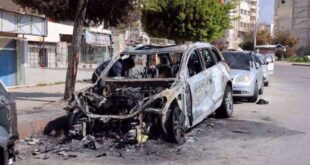January 27, 2018, The Intercept_ – Nour Samaha
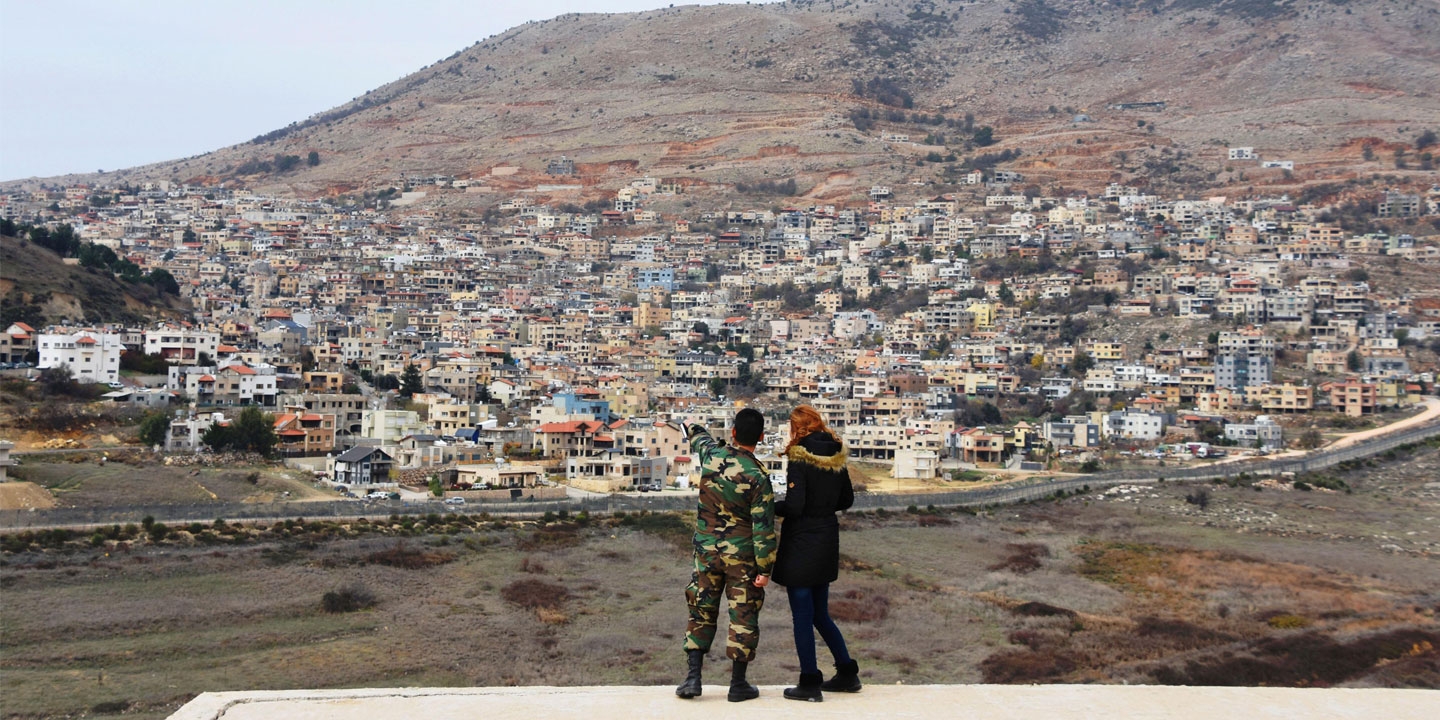
ISRAEL IS EXPANDING its influence and control deeper into opposition-held southern Syria, according to multiple sources in the area. After failed attempts to ensure its interests were safeguarded by the major players in the war next door, Israel is pushing to implement the second phase of its “safe-zone” project — an attempt to expand a buffer ranging out from the occupied Golan Heights deeper into the southern Syrian provinces of Quneitra and Daraa. The safe zone expansion marks a move toward deeper Israeli involvement in Syria’s civil war.
The Intercept learned the outlines of the safe-zone expansion plan through a monthslong investigation relying on information from a variety of sources, including Syrian opposition activists on the ground in the south, Syrian opposition figures based in Jordan, Syrian government sources, and an Israeli-American NGO directly involved in the safe-zone project.
The safe zone appears intended to keep the Syrian army and its Iranian and Lebanese allies as far away from Israel’s border as possible, as well as solidify Israel’s control over the occupied Golan Heights. Israel seized the Golan from Syria in 1967’s Six-Day War. Expanding a buffer zone would likely make any negotiations over the return of the Syrian territory more difficult in the future, because the Golan Heights will be surrounded on both sides by areas with significant Israeli influence.
Over the last two years, Israel started building out the first phase of a safe zone in southern Syria. The project enabled the Israeli army, through humanitarian organizations and military personnel, to gain access to opposition-held areas in return for supplying aid, medical treatment inside Israel, and basic goods.
According to sources, the second phase, which is currently underway, includes, among other things, the establishment of a 40-kilometer, Israeli-monitored buffer beyond the Golan Heights, a Syrian border police force armed and trained by Israel, and greater involvement in civil administration in opposition-controlled areas in two southern provinces. The expansion of the project also involves military aid to a wider array of opposition factions in both Quneitra and Daraa. The wider buffer zone also sees partnerships being built up with Syrian opposition leaders, civil society leaders, NGOs, and health officials on the ground to work on joint educational, health, and agricultural projects.
Israel has launched numerous strikes into Syrian territory, often understood to be efforts to keep advanced weapons out of the hands of hostile militants, like those in Lebanon’s Hezbollah. However, the buffer zone — and its expansion — stand as a deeper and more long-term investment in the Syrian war. Last summer, I reported on Israel’s burgeoning support for a rebel faction called the Golan Knights. Subsequently, rebels speaking to the Wall Street Journalconfirmed that the cash payments, which Israel claimed were purely humanitarian, were used for paying fighters’ salaries and purchasing weapons and ammunition.
Contacted for comment about the safe-zone expansion by an Intercept journalist in New York, an Israeli official, who refused to speak under any other attribution, said, “It’s a ridiculous and unfounded claim, that Israel is creating a buffer zone. Israel provides humanitarian aid as part of its values and to help strengthen stability.” Confronted with previous reporting about Israeli support for Syrian rebel factions in the vicinity of the Golan Heights, the official refused to comment.
As the war drags on, more Syrians inside opposition areas are reluctantly accepting Israel’s influence and involvement in their communities. “The humanitarian situation here is hard,” explained Abu Omar, an opposition activist who lives in the rebel-held town of Quneitra and asked to not to have his full name used because of the sensitivity of the subject. Abu Omar said that initially people in the area were against Israeli involvement in the area. Though he still opposes Israel’s presence, he said, others have changed their minds: “When Israel gives people salaries, medication, food, and water, people start to like them, and honestly today, it is not a small number; it is a now a large number.”
“They bought people with aid,” he said. “Although not all the residents accept Israeli involvement.”
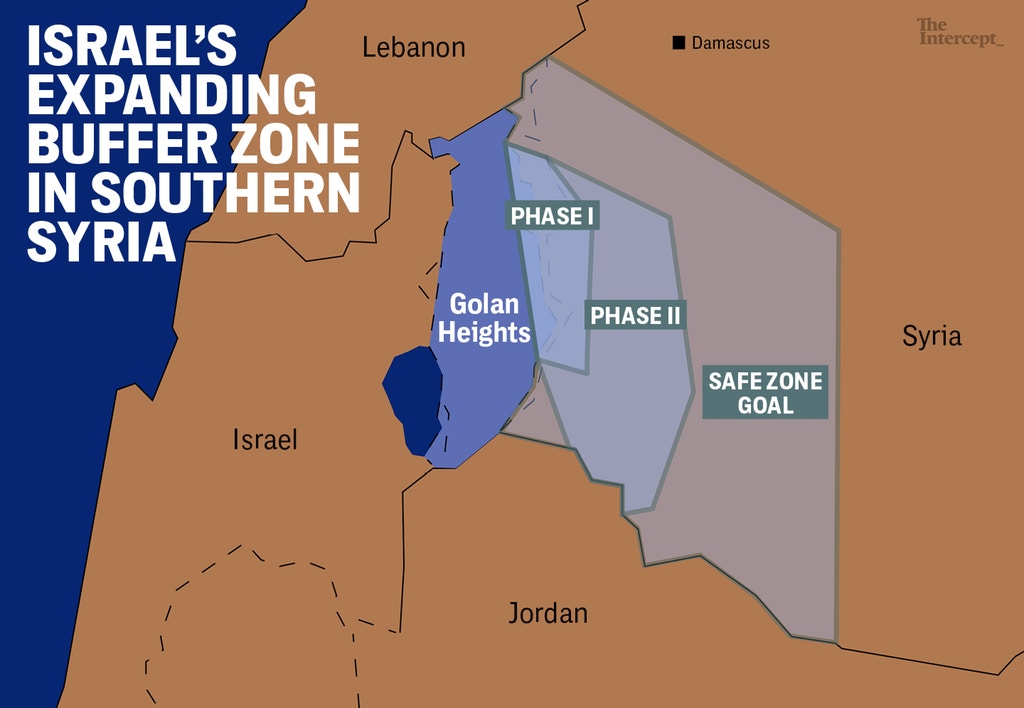
OVER THE SUMMER, Israeli army and intelligence officials began implementing the second phase of the safe-zone project. They started to train and equip a force of around 500 Syrian opposition fighters from the Syrian rebel group, Golan Knights, as a border police force. The border guards, responsible for the border between the safe zone and the Israeli-occupied Golan Heights, would monitor the area and report back to the Israelis, according to a Syrian opposition source in the area and Syrian government sources monitoring the area, neither of whom agreed to be quoted on the record because of the sensitivity of the issue.
The border force is expected to patrol the separation fence from just south of the government-allied Druze town of Hadar through opposition-controlled towns of Jabata Khashab, Bir Ajam, Hamadiyah, and Quneitra, eventually crossing all the way to Rafid in southern Quneitra province.
“This is a fully-fledged Israeli project, where they are pouring money and time to make it happen,” said Abu Ahmad, the pseudonym of an opposition activist based in Jabata Khashab — the same town where the Golan Knights are based. Abu Ahmad declined to use his real name because of the sensitivity of the issue. “They’ve been provided with M16s” — American-made assault rifles used by the Israelis — “vehicles, salaries, and training.”
The Golan Knights have a military base located no more than a few hundred meters from the border in opposition-controlled territory, making it relatively easy for Israeli personnel to access.
Some locals are not pleased with this development. “What Israel is doing now in the area is very real and very dangerous for the future here,” said Abu Ahmad, who fears Israel’s activities will be to the detriment of Syria and Syrians, citing Israel’s 22-year occupation of southern Lebanon as a precedent.
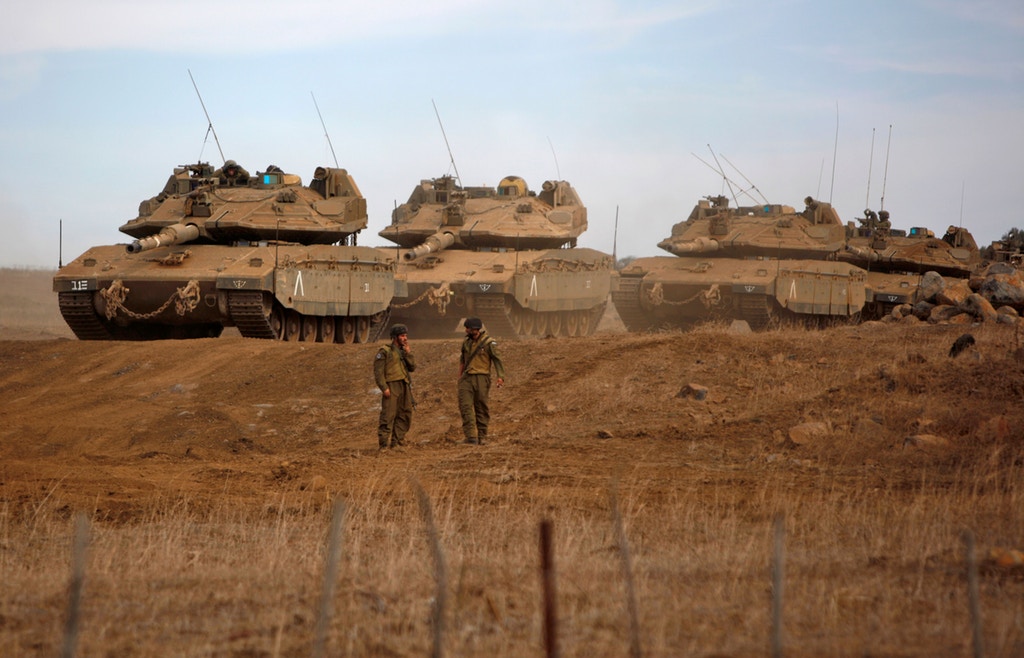
Photo: Jalaa Marey/AFP/Getty Images
ISRAEL’S RECENT ANXIETIES about the Syrian civil war spring from a flurry of activity over the summer that saw the implementation of a U.S.-Jordanian-Russian de-escalation deal, the announcement of the termination of the CIA-backed train-and-equip program for rebels, and the significant reduction of Jordanian support for opposition groups fighting the Syrian government.
Israel has both publicly and privately voiced its concerns over what it sees as increasing Iranian influence in Syria and Hezbollah’s presence close to its northern border. But Israel feels its worries have not been adequately addressed, remaining unsatisfied with the guarantees it has received thus far — especially after repeated visits by its political and intelligence leaders to Washington and Moscow, where they were unable to secure any concrete promises from their allies.
According to a Western diplomatic source, who asked not to be identified because he is not permitted to speak to the media, Israeli officials have been pushing for the implementation of a 40-kilometer safe zone in the south, calling on European countries to support this idea, and asking the U.S. and Russia for guarantees of its implementation. While both the U.S. and Russia told Israeli officials they care about the country’s safety, the request for the 40-kilometer safe zone has all but been rejected, according to Western diplomats, who were not authorized to speak to the media.
However, Israeli army’s chief of staff, Gadi Eisenkot made it clear that Israel is still seeking to implement a 40-kilometer-wide zone free of any Iranian influence. “We’re pursuing several different avenues to prevent Iranian entrenchment within 30-40km of the border,” he told an Israeli newspaper. “We want to get to a point where there is no Iranian influence in Syria, and this is being done in a combined military and diplomatic effort.” A zone of that size would stretch across both the Quneitra and Daraa provinces.
According to Syrian opposition commanders based in Jordan, who have been privy to the details of the de-escalation deal, the Israelis made it clear that even 40 kilometers would not be enough.
“They basically want Hezbollah and Iran to be pushed as far back as Hama,” said one commander based in Amman, who asked not to be named because of the delicacy of the issue.
Recently, Israeli concern about Iranian and Hezbollah presence in the area was exacerbated after it was revealed that Russia and the U.S. plan on maintaining the status quo regarding the de-escalation deal in the south, with Israeli reports citing the Russian defense minister as having told the Israelis that 40 kilometers is unrealistic.
Israeli concerns have been further heightened following a government-led offensive last month that resulted in the surrender of opposition-held Beit Jinn — which borders the Israeli-occupied Golan Heights — bringing government forces and its allies closer to the Israeli-held territory.
It’s not just Iran and its allied forces in Lebanon that Israel is concerned about, however, but also its control over the Golan Heights. Israel captured the 1,200-square-kilometer territory of land in 1967 and has occupied it since. Unlike the other territories it occupies, Israel officially annexed the Golan Heights in 1981 in a move condemned by the international community. While Israel has spent decades seeking international legitimacy for its claim, only in the last five years — with the Syrian Civil War at its doorstep — have these calls for international recognition of the Golan as Israeli territory become louder and more prevalent in its political and diplomatic circles.
The extended buffer zone, or “safe zone” inside Syria, would bolster the Israeli stance that the Syrian government is not in a position to make claims of sovereignty over an area that is not even under Damascus’s control.
The push into Syrian territory is being done in tandem with an increase in Israeli activity inside the occupied Golan Heights. The push includes expanding Israeli settlement activity; investing more in local infrastructure and the local economy; encouraging the 20,000 Syrians still living there to take Israeli citizenship and participate in local elections; and the licensing and approval of a controversial multimillion-dollar oil exploration project — all toward the aim of cementing Israel’s hold on the Golan Heights.
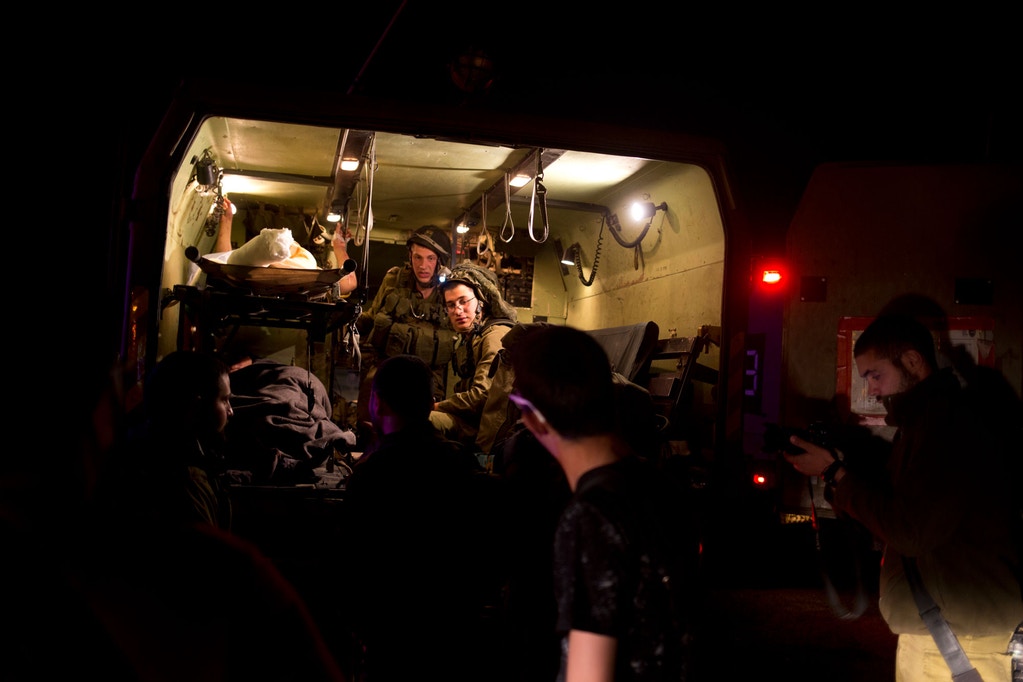
Photo: Dusan Vranic/AP
WITH OPPOSITION FACTIONS now searching for new sponsors after their previous sponsors — Jordan, through its Military Operations Command, and the United States — shifted their Syria policies, Israel has jumped at the chance to step in.
In late July, a small group of Israeli military and intelligence personnel, traveling in ambulances, made a tour of the west Daraa countryside, according to Syrian government military sources, who asked not to be named because they are not permitted to speak to the media. During their tour, the Israeli officials met with commanders from the nationalist rebel group Liwa Jaydour, which is linked to the loose coalition of the Free Syrian Army, as well as Jaysh al-Ababil, which operates under the umbrella of the Jordanian- and American-backed rebel coalition, known as the Southern Front.
Another meeting then took place in September in the Quneitra border town of Rafid, according to a Syrian government source, a rebel commander in Jordan, and an opposition figure in Quneitra. Local council leaders, doctors, and militia commanders — including those from Liwa Jaydour, the Golan Knights, and the Syrian Revolutionaries Front — met with an Israeli representative to discuss further cooperation.
“There are some from the Southern Front who are now working with Israel, and the same for Free Syrian Army factions, taking money and weapons,” said Abu Ahmad, the opposition activist. “Jordan stopped sending them weapons, so they turned to Israel instead.”
Israel’s reach into the borderlands is beginning to be become publicly evident. A video recently released by SMART news agency showed a Daraa-based group, Ahrar Nawa Division, which is linked to the Free Syrian Army, using rockets from Israel.
Several senior commanders within the Southern Front based in Jordan and Syrian opposition activists in Quneitra confirmed to The Intercept that Liwa Jaydour, Liwa Saif al-Sham and Jaysh al-Ababil are now receiving aid from the Israelis.
“Yes, they are receiving some level of aid from Israel, and so are other groups, especially those within the Syrian Revolutionaries Front” — a loose coalition of other rebel factions — “who are now completely in Israel’s pocket,” said one Amman-based commander, who spoke on condition of anonymity for security reasons. “And we are starting to see Israeli aid coming through to Daraa, too.”
“There is enough aid,” he said, “but it is because the people are poor and when you offer them something they won’t turn it down.”
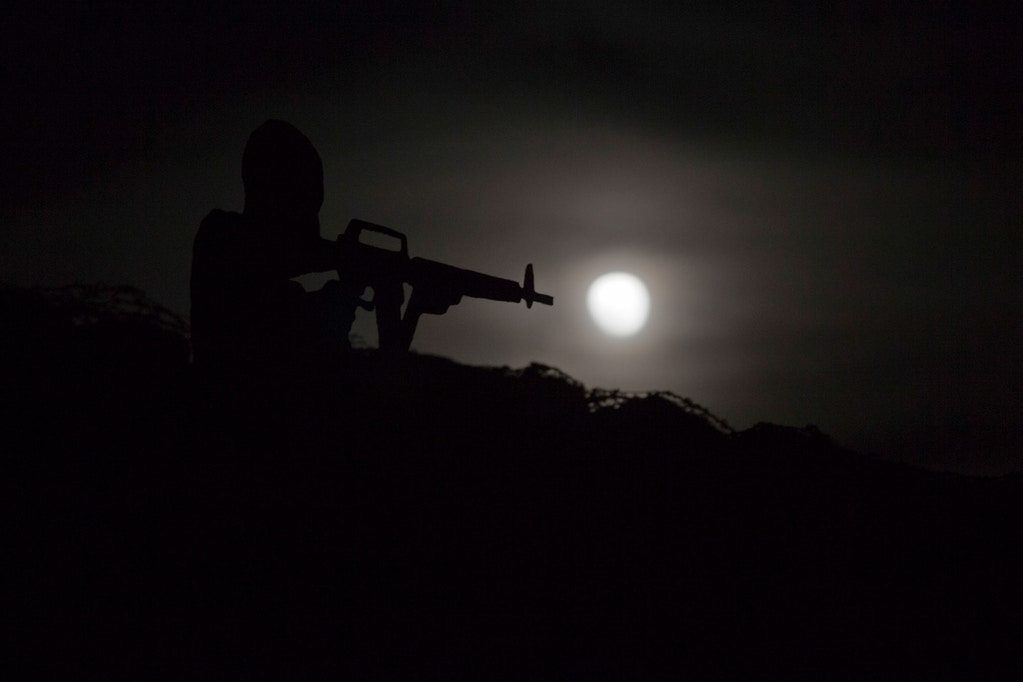
Photo: Ariel Schalit/AP
KEEN TO EMULATE the success that Turkey has had in cementing its long-term influence through opposition proxies in the areas along its border, Israel is attempting to do the same in Syria’s south — not just through armed groups, but also by working closely with local councils on health, security, infrastructure, and education issues.
Amaliah, an Israeli NGO founded by Israeli-American businessman Moti Kahana, has been involved in Quneitra, in the nominal United Nations buffer zone between the Israeli-occupied Golan and Syrian-controlled territory, since 2016. The group is now working with local partners in Daraa, looking to expand its safe-zone mission further into Syria. While most of Amaliah’s projects are based in the south, Kahana said he’s no stranger to Syria’s opposition-controlled north. Recent media reports have featured Amaliah because of its involvement in the establishment of a school in the opposition-held northern city of Idlib.
“When I started helping Syrians by the end of 2011, I started in Idlib,” Kahana said. “It took a long time for [my role] to be publicly acknowledged in the north. No one wanted to be affiliated with an Israeli.”
When the news about the school broke, opposition activists in Idlib denied any Israeli involvement in the area, and the school itself also contacted Kahana asking him to deny any involvement, he said. “They were scared because of Nusra’s reaction, as Nusra controls the area,” said Kahana, referring to the Nursa Front, a jihadi Syrian rebel group. “Now [the school is] asking me to say I’m involved, with the hopes this will stop the Russian bombing in the area.”
Meanwhile in the south, Amaliah, in partnership with the Israeli authorities, has been able to work with local opposition councils relatively unhindered, leading to what Kahana describes as the successful implementation and completion of “phase one” of the buffer zone — a 10-kilometer-wide area in Syrian territory where Israeli NGOs and military personnel can operate.
“In the south it’s much easier,” said Kahana. “I get lists from inside, and also the Israelis come to me with requests. That’s a little easier for me because the Israelis are involved, and they know the people, they’re already talking to them. Even if I get the list from inside, I still run it by the Israelis because they know what’s going on.”
Now Israel is busy working on the implementation of the second phase of the safe zone with the expansion into Daraa, Kahana said.
“I can say yes,” Kahana said when asked about the buffer expansion. “There were some political issues, because Daraa was difficult to partner with the Israelis,” he added, citing historical grievances and animosity toward Israel as the main obstacle for opposition groups and civilians residing in the southwestern province. “It was a little bit harder for them to accept supplies through the Israeli border and to even work with the Israelis, but I told the groups there to look at what we did with stage one of the safe zone and its success.”
Kahana said he had a working relationship with several of the local opposition groups in Daraa, as well as local NGOs, such as Rahma Relief, and local doctors on the ground. After publication of this story, Rahma Relief denied having any contact with Kahana beyond social media. “We have nothing to do with Kahana and he is just a guy on Facebook who follows us,” said Adib Chouiki, a top official at Rahma Relief.
“By 2018, I want to establish two schools, one in Daraa and one in Quneitra, as well as have a hospital inside Quneitra up and running,” Kahana said. “I’ve already started my due diligence in the area.”
 Syria Support Movement solidarity with the Syrian people
Syria Support Movement solidarity with the Syrian people

